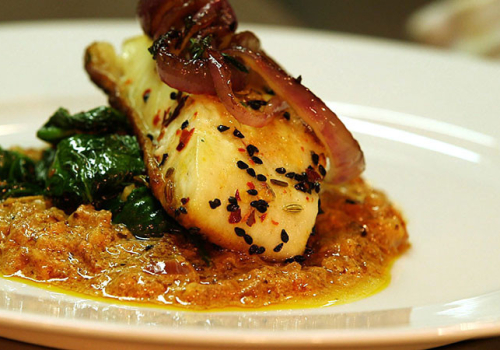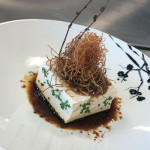Culinary cross-breeds
It is not a coincidence that you find spicy chilli-coated chicken tikkas on menus at several British restaurants in England. Or to catch popular English chefs like Nigella Lawson and Jamie Oliver talk endlessly about chutneys and curries like they have grown up eating that stuff. And to find Indian spices such as cloves, cinnamon and cumin being thrown on roasts and grills in authentic English recipes. For there are a host of culinary parallels that can be drawn between Indian and English kitchens.
According to Chef Paul Kinny director of culinary services at The Palladium Hotel, Mumbai, since India was ruled by a host of European powers at various points of time, from Portuguese to French to Dutch to British, these settlers came to India and brought with them their own cuisine. “This led to an exchange of cookery notes and adaptations leading to a whole new style of cooking known as Anglo-Indian cuisine.”
The most prominent among these were the English colonisers. When the settlers were still in India, our khansamas improvised many authentic recipes to make it palatable for their sahibs. So while native Indian fare was tamed down to make it less spicy, English recipes were mildly spiced to bring about depth.
Celebrity Chef Madhur Jaffery, says, “The historical connection between Britain and India goes back to 1600 AD and today, it is food that maintains that connection. Though the Indian food which the British like is not always what is served in India, the British have adapted it to suit their own needs.” Take for instance the designated curry nights practiced in English pubs. It’s interesting to see the way the British like to have some control over their curries. They eat by assigning them clear categories like very hot, hot, medium, mild to suit their tastebuds, observes Jaffrey.
This formula led to the origin of several dishes that had no country of origin, but a unique character of their own. Delhi-based Anglo-Indian caterer Rajyasree Sen feels that the way these recipes shaped up depended on what was locally available for the cooks. “While Mumbai’s Portuguese taught their chefs how to use malt vinegar, in Kolkata a lot of fish and mustard was used by Jewish colonisers. Similarly, the French in Pondicherry merged Indian recipes with cheeses and cream,” says Sen.
This culinary cross influence gave rise to dishes such as kedgeree (Britain’s version of classic kichuri), mulligatawny, a daal-based soup, meat jalfrezie, railway mutton curry, bad word curry, Bengal Lancer’s shrimp curry, croquettes and other dishes that are an accurate reflection of both these worlds.
Today, Sen who ran an Anglo-Indian restaurant called Brown Sahib for three years in the capital thinks that this cuisine has a selective audience. She says, “In places like Kolkata and Pondicherry, even today Anglo-Indian recipes are thoroughly followed and the food is widely relished at various restaurants and country clubs. But in places like Mumbai, it still has to find takers. ”
CHICKEN TIKKA MASALA
Madhur Jaffery teaches us how to make Britain’s national dish chicken tikka masala
INGREDIENTS FOR THE CHICKEN TIKKA: Boneless chicken tikka, 675 gm; Salt, 1¼ tsp; Lemon juice, 3 tbsp; Ginger root (grated), 1 tbsp; Cloves of garlic (crushed), 2; Cumin, 1 tsp; Paprika, 1 tsp; Chilli powder, ¾ tsp; Whipping cream, 6 tbsp; Garam masala, ½ tsp; Sunflower oil, 3 tbsp.
INGREDIENTS FOR THE MASALA:
Sunflower oil, 4 tbsp; Onions (finely sliced), 140 gm; Ginger root (grated), 1 tbsp; Cloves of garlic (crushed), 5-6; Coriander powder, 1 tbsp; Turmeric powder, ½ tsp; Chilli powder, ¾ tsp; Paprika, 2 tsp; Yogurt, 4 tbsp; Tomatoes (finely chopped), 2; Chicken stock, 350 ml; Salt, ¼ tsp; Garam masala, ¼ tsp; Coriander leaves, 4 tbsp.
METHOD: In a bowl, rub chicken with salt and lemon juice and set aside for 20 minutes. Add ginger, garlic, cumin, paprika, chilli powder, cream and garam masala. Mix well, cover, and refrigerate for six to eight hours. Thread the chicken pieces on a skewer and grill until done. (You can do this using a griller or on live fire from your stove.)
In a pan, pour 4 tablespoons of oil and set it over medium-high heat. Once hot, add onions and stir until brown. This should take about six or seven minutes. Add ginger and garlic and continue stirring. Now add coriander powder, turmeric, chilli powder and paprika and cook for 10 seconds further. Add yogurt, one spoon at a time and add tomatoes to this mixture. Fry the gravy for three to four minutes and allow it to simmer (covered) until the tomatoes turn pulpy. Add chicken stock and salt and cover again. Cook it for 15-20 minutes on low flame and add garam masala and coriander leaves. Fold the cooked tikkas in this and serve hot.
Related posts from Verve:
Verve Trending
Sorry. No data so far.
us on Facebook to stay updated with the latest trends







